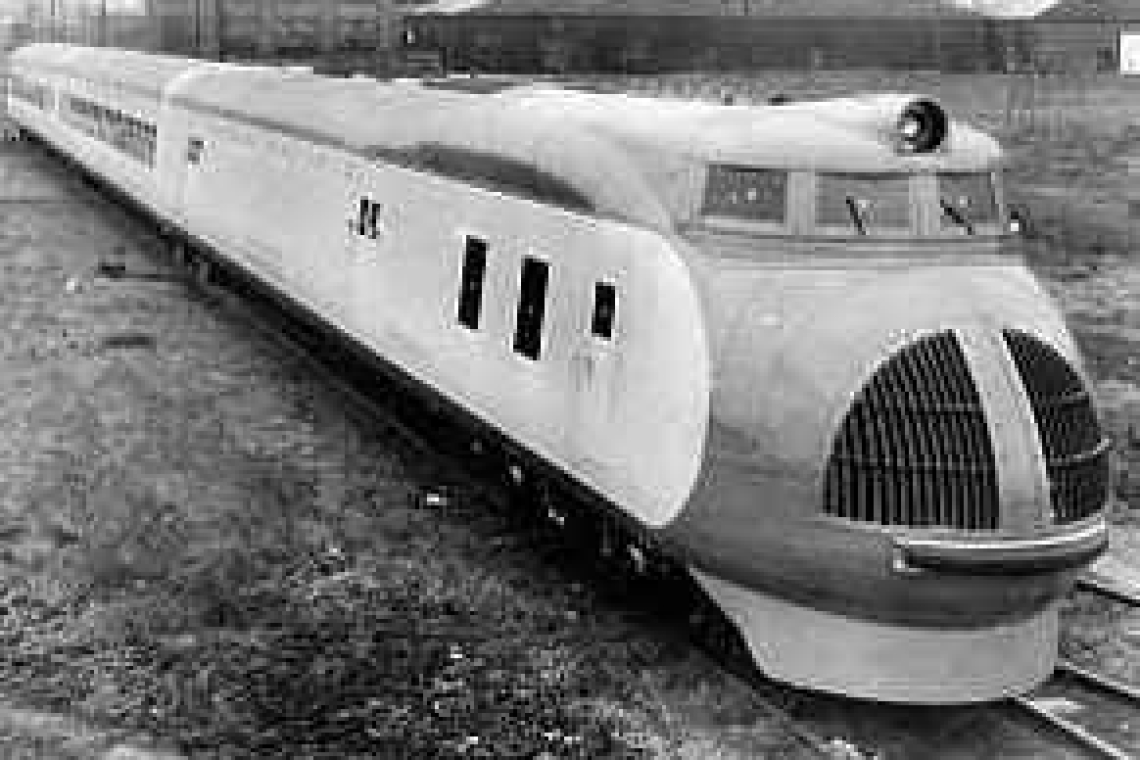By Roger Arrendel & Morgan Platz
In the 1930’s, train design was influenced by wartime manufacturing. On the west coast, they were building airplanes, so the train builders also had aerodynamics in mind.
In 1934, Union Pacific commissioned the production of the M-10000 “Stream-liner”, designed by William Bushell Stout, who just happened to be a top plane designer. The M-10000 was the first high-speed passenger train, reaching a top speed of 110 mph. The train could hold 120 passengers, their baggage, and an area to prepare food.
The train was able to reach high speeds and use less fuel for many reasons: First, its exterior is aerodynamic, meaning curves that flowed with the wind. The stream-liner included the engine and two passenger cars. Second, the body was built of aluminium metal, which is light weight, and, finally, it had a low centre gravity that allowed it to be stable.
In 1941, the train’s engine needed to be replaced, but Union Pacific decided to scrap it instead. The aluminium body was used to build aircraft for World War 2. Although only one M-10000 was built, it was not considered a failure. The M-10000 led to the construction of other stream lines, including the M-10001 built less than a year after the 10000 entered passenger service.
The M-10001 was bigger. It was a six-car train and featured a diesel engine. The M-10001 set the coast to coast cross America record at 57 hours. Other stream liners would follow, but with the start of World War II, most aluminium went to the production of airplanes, and the track system across the United States was not upgraded to handle the higher speeds.







